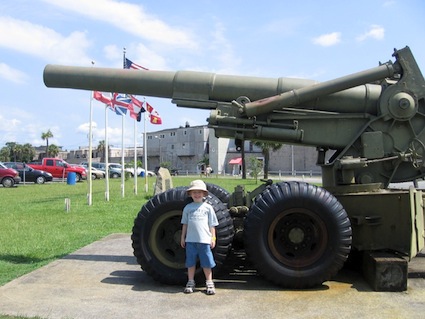I don’t generally review individual websites. I’ve done that in the distant past and even then it happened only on rare occasions. It’s not because I don’t believe they’re not worthy. Rather, it’s because I like to provide links that align with a specific context I’m attempting to portray on 12MC. Plus, I’m not very good at predicting whether websites will flourish over time. Reviews become worthless when the subject goes away. I don’t think we’ll have a problem here. The organization I’ll feature today has been around for more than 25 years.
It’s “Random Topic Thursday,” my ongoing effort to put a dent in my overflowing list of potential topics. The oracle said that I should review the Coast Defense Study Group today. And so I shall.
Incidentally, Random Topic Thursday is pretty random itself. I don’t do it every Thursday so I guess it could be described more accurately as Random, Random Topic Thursday.
What is the Coast Defense Study Group exactly?
‘m glad you asked. I’ll let them use their own words:
“The CDSG is a non-profit corporation formed to promote the study of coast defenses and fortifications, primarily but not exclusively those of the United States of America; their history, architecture, technology, and strategic and tactical employment.”
That’s probably why I added their site to my list so long ago. I can’t remember when it happened. I’m a sucker for forts, fortresses and fortifications. I’ve visited a number of them during my travels including those that could be classified as coastal defenses. I’m a relentless counter, and not simple a one-dimensional county counter either, although I do happen to enjoy it immensely. I also count lighthouses, ferries, breweries, waterfalls and of course fortifications. I manage to keep my counting under control so it’s a relatively mild and harmless form of obsessive-compulsive behavior I suppose.
Onto the Site
The site has an old-school Web 1.0 (or earlier) feel to it, I say nostalgically. That’s fine; it’s the content that matters to me anyway and they add to the site continuously. The simple HTML structure doesn’t detract from my opinion of it. I wouldn’t feature a site simply because it was pretty. The site includes a wealth of information and resources on coastal defenses tucked away on numerous pages, forums, and newsletter archives. The organization has roughly 500 members which surprised me in a good way. It’s nice to know that so many individuals have banded together in a common cause.
My Visits to the Most Endangered
I enjoyed the “Most Endangered” page in particular. I’ve actually been to two of the fortifications included on the list.

Fort Screven (map) is located on Tybee Island in Georgia. As far as coastal fortifications go, this one came later than most of those I’ve visited. The primary era of service was just prior to the Spanish-American War until just after World War II, so about 1897-1947.
The Tybee Island visitors website says, “Today, visitors marvel at the private residences nestled atop the fort’s walls…” Well, that’s why the Coast Defense Study Group considers Fort Screven to be an endangered site. Marvelous private residences and vigorous historic preservation seem to clash in conflicting interests here.
Don’t tell the CDSG that I was there more for the lighthouse than the fort. I do love fortifications — don’t get me wrong — I like lighthouses more.
Except when I don’t

I definitely went to Dry Tortugas National Park expressly to see Fort Jefferson (map). That was a magnificent location I will never forget. Sure, a puny lighthouse perches atop a fortress wall and another one on an adjacent key, but in this instance the fort stole the show. It’s the largest masonry fortification in the Western Hemisphere and all sixteen million bricks had to be floated here from long distances.
The heyday of Fort Jefferson was the Civil War and its aftermath. It’s probably most notorious as the prison for Dr. Samuel Mudd in the wake of Abraham Lincoln’s assassination.
Fort Jefferson is in need of restoration and some of that was happening during my visit. However much still remains to be done.
I applaud the efforts of the CDSG. I’m not much of a joiner and I’ll mention once again a quote attributed to Groucho Marx: “I don’t care to belong to any club that will have me as a member.” If I were a joiner I’d probably consider teaming up with this gang though.

Leave a Reply